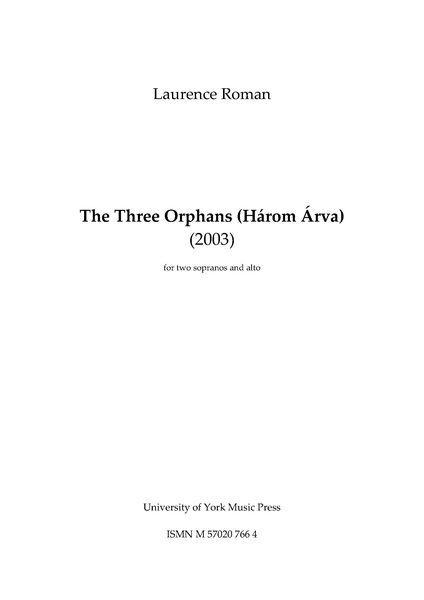The Bartók/Kodály collection of Hungarian Folksongs is, on one hand, an extraordinary ethnomusicological document and, on the other, a repository for one of Hungary’s richest cultural legacies. Bartók and Kodály devised a fastidious notational method enabling each nuance of every song to be faithfully recorded. There is no doubt that without their dedicated searching and cataloguing, the majority of material in the collection would, long since, have been lost without trace.
I was to write a piece as part of the York University Spring Festival. The theme for the festival was Myth and Folklore in Music so it seemed an ideal opportunity to explore the Bartók/Kodály collection for sources. I found four versions of a song entitled Három Árva (Three Orphans). While each told largely the same story, they all came from different regions and were set to widely differing melodies. One was barely more than a scrap, but the most colourful parts of the other three could be edited together to create a narrative, which began:
Yonder is a walnut tree
With three branches.
Underneath sit three orphans.
Three murderers pass that way.
The first two melodies I chose were collected by Kodály, one in Kászonujfalu (1912) and the other in Gyergóalfalu (1910). Bartók collected the third in Tekeröpatak (1907). I lived in Hungary for four years and had never heard of those villages – neither had my (Hungarian) parents, when I asked them – which I only mention as it bears witness to Bartók’s and Kodály’s dedication in scouring the remotest locations in their search.
One of the exciting paradoxes about Hungarian folk poetry is superficial ingenuousness throwing into relief a core of great emotional sophistication. The youngest of three orphans calmly resigning to die for the sake of his brothers becomes heroic in its very understatement. There is poignancy too in the startlingly human Virgin Mary (she speaks in peasant dialect), herself bereaved of her son, sending the orphans to wake their dead mother. The mother’s unsentimental explanation as to why she cannot arise from her coffin is horrific, yet highlights in its very matter-of-factness her resignation to grief at being separated from her sons. The brothers seem as unable to acknowledge the disappearance of their mother’s corporeal remains as she is unable to accept the departure of her spiritual self. While describing the flight of her soul, she speaks in the most soulful way a mother could. Christian doctrine about the duality of body and spirit seems to be running in irreconcilable parallel with the peasant perception of what it is to be human. The Virgin Mary’s contribution to the orphans’ plight is less than useless – if anything it serves only to underline their misery – and the hopelessness of their future exists entirely in the context of a Christianity perceived as little more than peasant superstition. All the folk songs describe the orphans’ desperate lot in the eventual care of their stepmother, so I superimposed all three accounts of her cruelty as a kind of bleak climax. The naïve, understated epilogue seems merely to re-establish resignation to God’s indifference at the plight of the poor.

